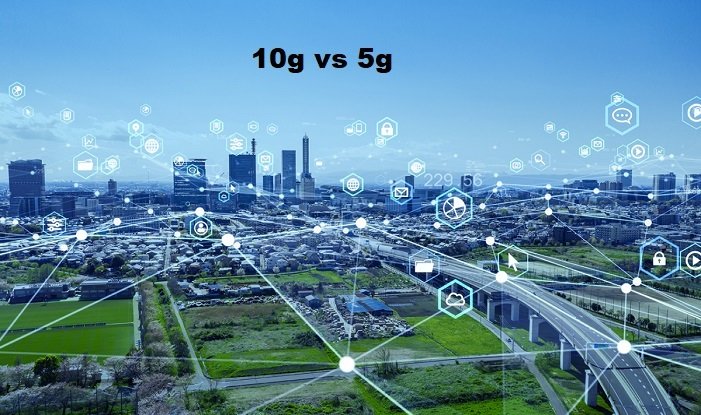Exploring the Battle: 10G vs 5G

In today’s fast-paced digital landscape, staying connected is not just a luxury but a necessity. As we navigate through the ever-evolving world of telecommunications, two terms often pop up in conversations: 10G and 5G. But what exactly are they, and how do they differ? Let’s dive in and unravel the intricacies of these two groundbreaking technologies.
Understanding the Basics
5G: Let’s start with 5G, the buzzword of recent years. 5G stands for the fifth generation of wireless technology, succeeding its predecessors 4G and 3G.
It promises blazing-fast speeds, ultra-low latency, and massive connectivity, heralding a new era of innovation and connectivity.
With 5G, you can download a high-definition movie in seconds, stream immersive virtual reality experiences without lag, and connect billions of devices seamlessly.
10G: Now, onto 10G, the next frontier in connectivity. 10G, short for 10th generation, takes the speed and capabilities of 5G to new heights.
While 5G focuses on mobile connectivity, 10G aims to revolutionize home broadband and enterprise networks. It promises speeds of up to 10 gigabits per second, transforming the way we consume content, work, and interact with the digital world.
Speed Matters: 10G vs 5G
5G Speed: 5G offers impressive speeds, with theoretical peak speeds reaching up to 20 gigabits per second. In real-world scenarios, users can expect download speeds ranging from 50 Mbps to several gigabits per second, depending on factors such as network congestion and proximity to cell towers. This enables faster downloads, smoother streaming, and enhanced gaming experiences on mobile devices.
10G Speed: On the other hand, 10G takes speed to the next level. With speeds of up to 10 gigabits per second, 10G networks are capable of delivering unparalleled performance for bandwidth-intensive applications.
Whether you’re streaming 8K video, conducting video conferences with multiple participants, or transferring large files in seconds, 10G ensures a seamless and lightning-fast experience.
Latency: The Need for Speed
5G Latency: Latency refers to the time it takes for data to travel from the source to the destination. 5G boasts ultra-low latency, with delays as low as 1 millisecond.
This near-instantaneous responsiveness is crucial for applications that require real-time interaction, such as online gaming, autonomous vehicles, and remote surgery.
10G Latency: Similarly, 10G offers ultra-low latency, enabling rapid data transmission and minimal delays. By reducing latency to mere microseconds, 10G facilitates seamless communication between devices, making it ideal for latency-sensitive applications in sectors like finance, healthcare, and manufacturing.
Coverage and Deployment
5G Coverage: While 5G deployment is rapidly expanding, coverage remains a challenge in certain areas. Urban centers and densely populated regions often enjoy robust 5G coverage, but rural areas and remote locations may still rely on 4G networks for connectivity.
Additionally, building a comprehensive 5G infrastructure requires substantial investment in infrastructure and spectrum allocation.
10G Coverage: Unlike 5G, which primarily focuses on mobile connectivity, 10G targets home broadband and enterprise networks. As a result, 10G deployment may vary depending on the region and the service providers’ investment priorities.
However, with its emphasis on high-speed internet access and advanced networking capabilities, 10G has the potential to bridge the digital divide and bring gigabit-speed connectivity to underserved communities.
The Future of Connectivity
As we look ahead, both 10G and 5G hold immense promise for transforming the way we live, work, and communicate.
While 5G revolutionizes mobile connectivity and enables a wide range of applications, 10G aims to redefine home broadband and enterprise networking with its lightning-fast speeds and low latency.
Whether you’re streaming your favorite movie on a 5G-enabled smartphone or conducting high-bandwidth tasks on a 10G network, the future of connectivity is brighter than ever.
As technology continues to evolve, one thing is certain: the quest for faster, more reliable connectivity will drive innovation and shape the digital landscape for years to come.





